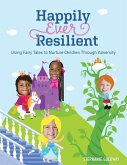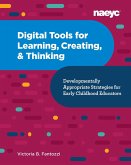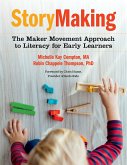Julie Smart
Inspiring Young Minds: Scientific Inquiry in the Early Years
Julie Smart
Inspiring Young Minds: Scientific Inquiry in the Early Years
- Broschiertes Buch
- Merkliste
- Auf die Merkliste
- Bewerten Bewerten
- Teilen
- Produkt teilen
- Produkterinnerung
- Produkterinnerung
Provides educators a concrete guide for using research-based principles of inquiry to help children explore their world. Using real-life examples and discussions on facilitating and guiding children in their natural exploration of their world, you will be able to engage and maximize learning. Web content and reproducible lesson plans make it easy to begin using proven inquiry-based instruction.
Andere Kunden interessierten sich auch für
![Nature Preschools and Forest Kindergartens: The Handbook for Outdoor Learning Nature Preschools and Forest Kindergartens: The Handbook for Outdoor Learning]() Nature Preschools and Forest Kindergartens: The Handbook for Outdoor Learning45,99 €
Nature Preschools and Forest Kindergartens: The Handbook for Outdoor Learning45,99 €![Teaching Stem Literacy: A Constructivist Approach for Ages 3 to 8 Teaching Stem Literacy: A Constructivist Approach for Ages 3 to 8]() Juliana TexleyTeaching Stem Literacy: A Constructivist Approach for Ages 3 to 843,99 €
Juliana TexleyTeaching Stem Literacy: A Constructivist Approach for Ages 3 to 843,99 €![Baby Steps to Stem: Infant and Toddler Science, Technology, Engineering, and Math Activities Baby Steps to Stem: Infant and Toddler Science, Technology, Engineering, and Math Activities]() Jean BarbreBaby Steps to Stem: Infant and Toddler Science, Technology, Engineering, and Math Activities32,99 €
Jean BarbreBaby Steps to Stem: Infant and Toddler Science, Technology, Engineering, and Math Activities32,99 €![Children in the Digital Age [25-Pack]: A Guide for Families Children in the Digital Age [25-Pack]: A Guide for Families]() Brian PuerlingChildren in the Digital Age [25-Pack]: A Guide for Families27,99 €
Brian PuerlingChildren in the Digital Age [25-Pack]: A Guide for Families27,99 €![Happily Ever Resilient: Using Fairy Tales to Nurture Children Through Adversity Happily Ever Resilient: Using Fairy Tales to Nurture Children Through Adversity]() Stephanie GolowayHappily Ever Resilient: Using Fairy Tales to Nurture Children Through Adversity27,99 €
Stephanie GolowayHappily Ever Resilient: Using Fairy Tales to Nurture Children Through Adversity27,99 €![Digital Tools for Learning, Creating, and Thinking: Developmentally Appropriate Strategies for Early Childhood Educators: Developmentally Appropriate Digital Tools for Learning, Creating, and Thinking: Developmentally Appropriate Strategies for Early Childhood Educators: Developmentally Appropriate]() Victoria B. FantozziDigital Tools for Learning, Creating, and Thinking: Developmentally Appropriate Strategies for Early Childhood Educators: Developmentally Appropriate23,99 €
Victoria B. FantozziDigital Tools for Learning, Creating, and Thinking: Developmentally Appropriate Strategies for Early Childhood Educators: Developmentally Appropriate23,99 €![Storymaking: The Maker Movement Approach to Literacy for Early Learners Storymaking: The Maker Movement Approach to Literacy for Early Learners]() Michelle Kay ComptonStorymaking: The Maker Movement Approach to Literacy for Early Learners36,99 €
Michelle Kay ComptonStorymaking: The Maker Movement Approach to Literacy for Early Learners36,99 €-
-
-
Provides educators a concrete guide for using research-based principles of inquiry to help children explore their world. Using real-life examples and discussions on facilitating and guiding children in their natural exploration of their world, you will be able to engage and maximize learning. Web content and reproducible lesson plans make it easy to begin using proven inquiry-based instruction.
Hinweis: Dieser Artikel kann nur an eine deutsche Lieferadresse ausgeliefert werden.
Hinweis: Dieser Artikel kann nur an eine deutsche Lieferadresse ausgeliefert werden.
Produktdetails
- Produktdetails
- Verlag: Redleaf Press
- Seitenzahl: 200
- Altersempfehlung: 3 bis 8 Jahre
- Erscheinungstermin: 11. April 2017
- Englisch
- Abmessung: 251mm x 201mm x 13mm
- Gewicht: 386g
- ISBN-13: 9781605545189
- ISBN-10: 160554518X
- Artikelnr.: 46295336
- Herstellerkennzeichnung
- Libri GmbH
- Europaallee 1
- 36244 Bad Hersfeld
- gpsr@libri.de
- Verlag: Redleaf Press
- Seitenzahl: 200
- Altersempfehlung: 3 bis 8 Jahre
- Erscheinungstermin: 11. April 2017
- Englisch
- Abmessung: 251mm x 201mm x 13mm
- Gewicht: 386g
- ISBN-13: 9781605545189
- ISBN-10: 160554518X
- Artikelnr.: 46295336
- Herstellerkennzeichnung
- Libri GmbH
- Europaallee 1
- 36244 Bad Hersfeld
- gpsr@libri.de
Julie Smart holds a PhD in curriculum and instruction and is currently a professor of math and science education at Clemson University. She is also a consultant in research methodology and program accreditation with a focus on inquiry-based instruction, teacher effectiveness, and classroom management. Smart resides in Greenville, SC, with her husband and two children.
Introduction
Chapter 1: Inquiring Minds Want to Know
What are the main elements of inquiry-based instruction?
Chapter 2: Feed Me
How do we select appropriate materials for children in science?
Chapter 3: Eggs in the Roses
How do we give children opportunities to explore science for themselves?
Chapter 4: Physics in the Breezeway
How can we help children conduct a simple investigation?
Chapter 5: Now You See Me
How can we ask children effective questions in science?
Chapter 6: Timber!
How can we use visual representations and models to support student
learning?
Chapter 7: Stayin' Alive
How do we adjust science instruction based on student learning?
Chapter 8: Making a List, Checking it Twice
How can we support children in representing data in developmentally
appropriate ways?
Chapter 9: Baby Bird Birthday
How can we encourage children to communicate their scientific ideas in
multiple ways?
Chapter 10: Shake, Rattle, and Roll
How can we make science relevant to the lives of young children?
Chapter 11: Take Cover!
How can we accumulate meaningful resources for our science instruction?
Chapter 12: Playing with Fire
How can we ensure safety for all children during science instruction?
Chapter 13: Swimming in the Deep End
How can we meet the needs of all students in science instruction?
Chapter 14: When the Train Derails
How do we respond to unexpected challenges during science instruction?
Chapter 15: Creepy Crawlies
How can we model positive attitudes about science for children?
Chapter 16: On the Road Again...
How can we maximize the learning potential of field trips in science?
Chapter 17: Flying Monkeys
How do we capture teachable moments?
Appendix A 4Ex2 Instructional Model planning tools
Appendix B Formative Assessments for Science Instruction
Appendix C Sample Inquiry Lesson (Life Science)
Appendix D Sample Inquiry Lesson (Physical Science)
Appendix E Sample Inquiry Lesson (Earth Science)
Appendix F Inquiry-Based Instruction Self-Assessment
Appendix G Sample Science Contracts
Chapter 1: Inquiring Minds Want to Know
What are the main elements of inquiry-based instruction?
Chapter 2: Feed Me
How do we select appropriate materials for children in science?
Chapter 3: Eggs in the Roses
How do we give children opportunities to explore science for themselves?
Chapter 4: Physics in the Breezeway
How can we help children conduct a simple investigation?
Chapter 5: Now You See Me
How can we ask children effective questions in science?
Chapter 6: Timber!
How can we use visual representations and models to support student
learning?
Chapter 7: Stayin' Alive
How do we adjust science instruction based on student learning?
Chapter 8: Making a List, Checking it Twice
How can we support children in representing data in developmentally
appropriate ways?
Chapter 9: Baby Bird Birthday
How can we encourage children to communicate their scientific ideas in
multiple ways?
Chapter 10: Shake, Rattle, and Roll
How can we make science relevant to the lives of young children?
Chapter 11: Take Cover!
How can we accumulate meaningful resources for our science instruction?
Chapter 12: Playing with Fire
How can we ensure safety for all children during science instruction?
Chapter 13: Swimming in the Deep End
How can we meet the needs of all students in science instruction?
Chapter 14: When the Train Derails
How do we respond to unexpected challenges during science instruction?
Chapter 15: Creepy Crawlies
How can we model positive attitudes about science for children?
Chapter 16: On the Road Again...
How can we maximize the learning potential of field trips in science?
Chapter 17: Flying Monkeys
How do we capture teachable moments?
Appendix A 4Ex2 Instructional Model planning tools
Appendix B Formative Assessments for Science Instruction
Appendix C Sample Inquiry Lesson (Life Science)
Appendix D Sample Inquiry Lesson (Physical Science)
Appendix E Sample Inquiry Lesson (Earth Science)
Appendix F Inquiry-Based Instruction Self-Assessment
Appendix G Sample Science Contracts
Introduction
Chapter 1: Inquiring Minds Want to Know
What are the main elements of inquiry-based instruction?
Chapter 2: Feed Me
How do we select appropriate materials for children in science?
Chapter 3: Eggs in the Roses
How do we give children opportunities to explore science for themselves?
Chapter 4: Physics in the Breezeway
How can we help children conduct a simple investigation?
Chapter 5: Now You See Me
How can we ask children effective questions in science?
Chapter 6: Timber!
How can we use visual representations and models to support student
learning?
Chapter 7: Stayin' Alive
How do we adjust science instruction based on student learning?
Chapter 8: Making a List, Checking it Twice
How can we support children in representing data in developmentally
appropriate ways?
Chapter 9: Baby Bird Birthday
How can we encourage children to communicate their scientific ideas in
multiple ways?
Chapter 10: Shake, Rattle, and Roll
How can we make science relevant to the lives of young children?
Chapter 11: Take Cover!
How can we accumulate meaningful resources for our science instruction?
Chapter 12: Playing with Fire
How can we ensure safety for all children during science instruction?
Chapter 13: Swimming in the Deep End
How can we meet the needs of all students in science instruction?
Chapter 14: When the Train Derails
How do we respond to unexpected challenges during science instruction?
Chapter 15: Creepy Crawlies
How can we model positive attitudes about science for children?
Chapter 16: On the Road Again...
How can we maximize the learning potential of field trips in science?
Chapter 17: Flying Monkeys
How do we capture teachable moments?
Appendix A 4Ex2 Instructional Model planning tools
Appendix B Formative Assessments for Science Instruction
Appendix C Sample Inquiry Lesson (Life Science)
Appendix D Sample Inquiry Lesson (Physical Science)
Appendix E Sample Inquiry Lesson (Earth Science)
Appendix F Inquiry-Based Instruction Self-Assessment
Appendix G Sample Science Contracts
Chapter 1: Inquiring Minds Want to Know
What are the main elements of inquiry-based instruction?
Chapter 2: Feed Me
How do we select appropriate materials for children in science?
Chapter 3: Eggs in the Roses
How do we give children opportunities to explore science for themselves?
Chapter 4: Physics in the Breezeway
How can we help children conduct a simple investigation?
Chapter 5: Now You See Me
How can we ask children effective questions in science?
Chapter 6: Timber!
How can we use visual representations and models to support student
learning?
Chapter 7: Stayin' Alive
How do we adjust science instruction based on student learning?
Chapter 8: Making a List, Checking it Twice
How can we support children in representing data in developmentally
appropriate ways?
Chapter 9: Baby Bird Birthday
How can we encourage children to communicate their scientific ideas in
multiple ways?
Chapter 10: Shake, Rattle, and Roll
How can we make science relevant to the lives of young children?
Chapter 11: Take Cover!
How can we accumulate meaningful resources for our science instruction?
Chapter 12: Playing with Fire
How can we ensure safety for all children during science instruction?
Chapter 13: Swimming in the Deep End
How can we meet the needs of all students in science instruction?
Chapter 14: When the Train Derails
How do we respond to unexpected challenges during science instruction?
Chapter 15: Creepy Crawlies
How can we model positive attitudes about science for children?
Chapter 16: On the Road Again...
How can we maximize the learning potential of field trips in science?
Chapter 17: Flying Monkeys
How do we capture teachable moments?
Appendix A 4Ex2 Instructional Model planning tools
Appendix B Formative Assessments for Science Instruction
Appendix C Sample Inquiry Lesson (Life Science)
Appendix D Sample Inquiry Lesson (Physical Science)
Appendix E Sample Inquiry Lesson (Earth Science)
Appendix F Inquiry-Based Instruction Self-Assessment
Appendix G Sample Science Contracts

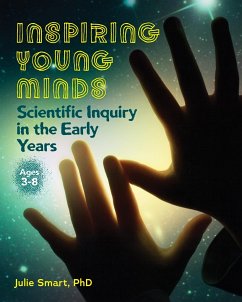
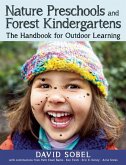
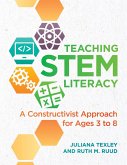
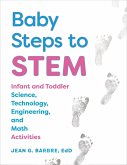
![Children in the Digital Age [25-Pack]: A Guide for Families Children in the Digital Age [25-Pack]: A Guide for Families](https://bilder.buecher.de/produkte/39/39760/39760789m.jpg)
